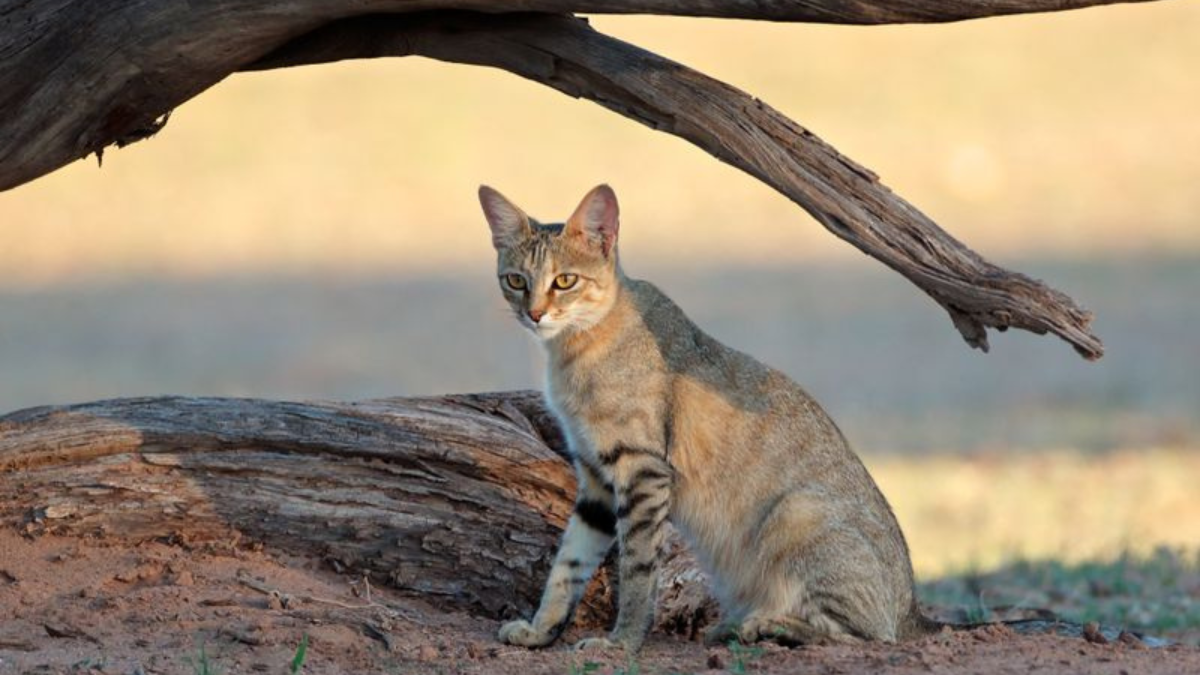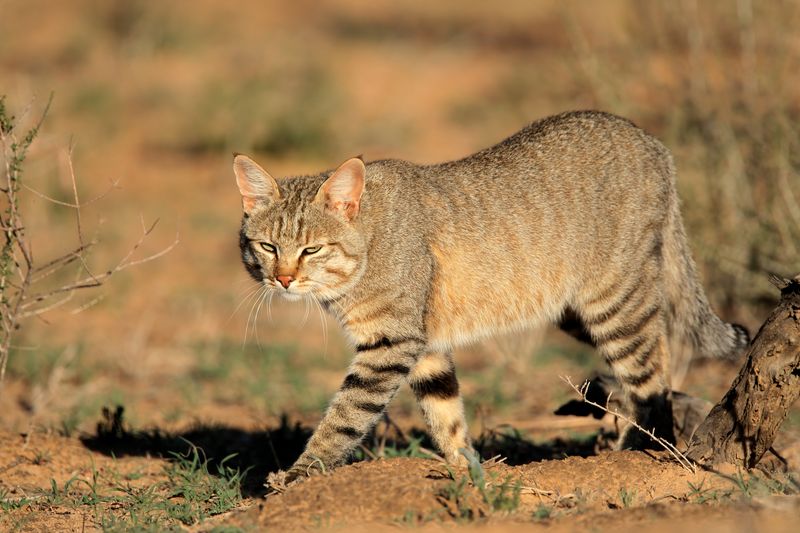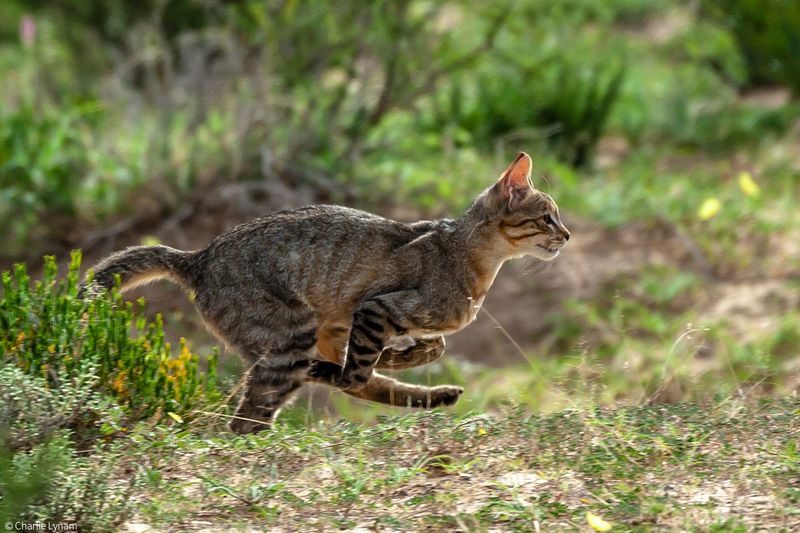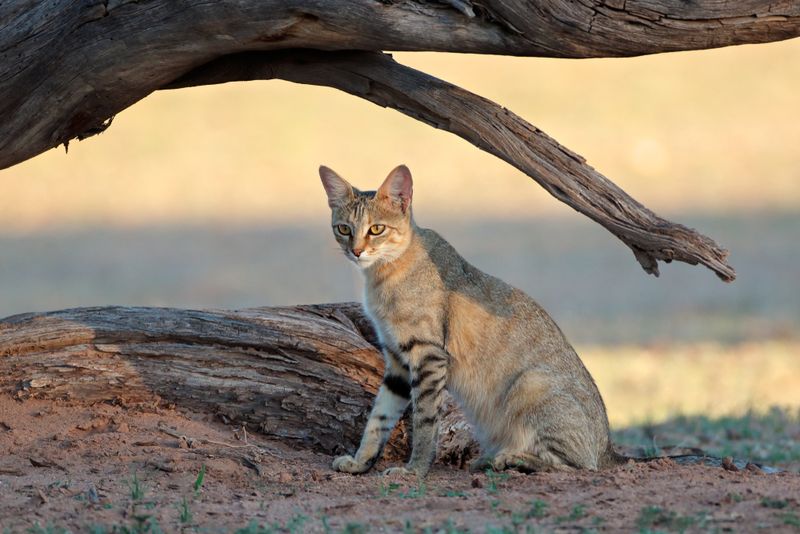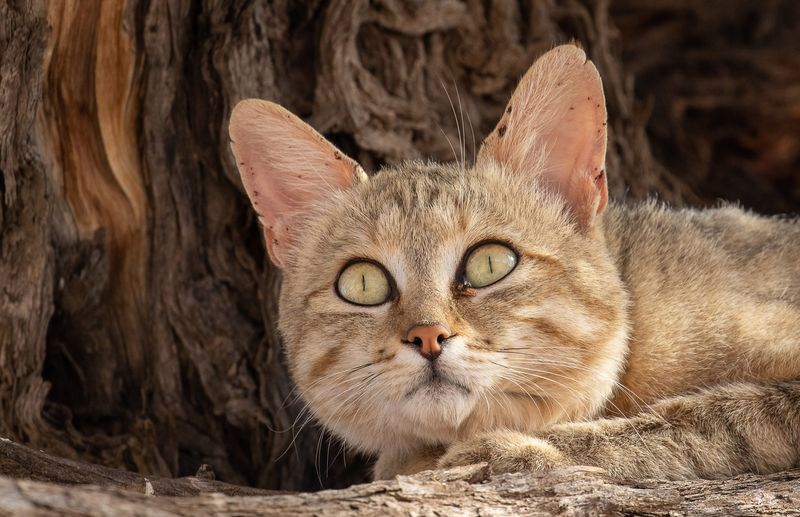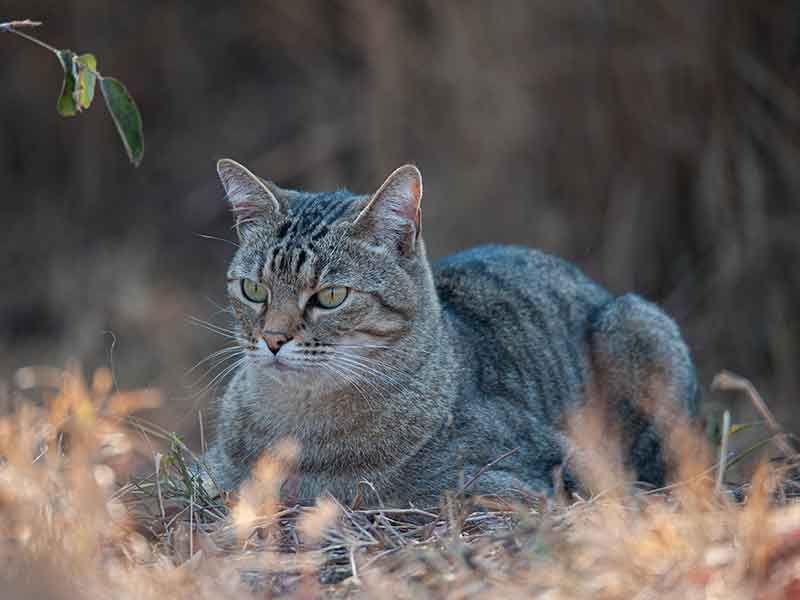📖 Table of Content:
- 1. Ancient Origins Dating Back 10,000 Years
- 2. Masters of Desert Survival
- 3. Striking Physical Similarities to House Cats
- 4. Skilled Hunters with Impressive Success Rates
- 5. Ongoing Hybridization Threatens Pure Wildcats
- 6. Solitary Lives with Complex Communication
- 7. Domestication Changed Their Brains, Not Looks
The calm, curled-up house cat on the windowsill has a wild lineage that stretches back to the deserts of Africa. Beneath the soft fur and sleepy eyes lies a genetic connection to one of nature’s stealthiest hunters. Domestic cats trace their ancestry directly to the African wildcat, a species still thriving in the wild today.
The African wildcat roams the savannahs and scrublands with quiet confidence. Though modest in size, it survives using keen senses, agility, and a solitary lifestyle. Its sandy coat, upright ears, and cautious movements reveal a creature built for stealth and endurance.
Despite thousands of years of domestication, the modern house cat retains many traits of its wild ancestor. The tendency to stalk, pounce, or vanish into a hiding spot echoes instincts shaped by life in unforgiving landscapes. This connection serves as a reminder that even the most pampered feline is only a few generations removed from the wild.
1. Ancient Origins Dating Back 10,000 Years
Archaeological evidence reveals that African wildcats began their relationship with humans around 10,000 years ago in the Fertile Crescent. Farmers stored grain, which attracted mice, which in turn attracted these skilled hunters.
Unlike wolves which were actively tamed by humans, wildcats essentially domesticated themselves. They found benefits in living near human settlements without much human intervention.
The oldest known evidence of cat domestication comes from a 9,500-year-old grave in Cyprus, where a wildcat was buried alongside a human, suggesting an already established bond between the species.
2. Masters of Desert Survival
Remarkably adapted to arid environments, African wildcats can survive with minimal water intake. Their specialized kidneys concentrate urine to conserve precious body moisture, a trait passed down to domestic cats.
Their sandy, striped coat provides perfect camouflage among desert grasses and rocks. This natural camouflage allows them to disappear into their surroundings when hunting or avoiding larger predators.
African wildcats are crepuscular hunters, most active during dawn and dusk when temperatures are cooler. This behavior pattern minimizes water loss while maximizing hunting success in the harsh desert climate.
3. Striking Physical Similarities to House Cats
At first glance, African wildcats could be mistaken for ordinary tabbies. They typically weigh 7-13 pounds—similar to domestic cats—though they possess longer legs and a more muscular build for pursuing prey across open terrain.
The most noticeable difference lies in their undomesticated behavior and cautious demeanor. Their ears often display distinctive reddish backs with small tufts, and their tails have dark rings with black tips.
Genetic testing confirms these wildcats share over 95% of their DNA with your household companion. The few genetic differences mainly affect brain development and fear responses—key changes that enabled domestication.
4. Skilled Hunters with Impressive Success Rates
African wildcats are natural-born predators with hunting success rates that would make lions jealous. They successfully catch prey in about 60% of their hunting attempts, compared to lions’ mere 25% success rate.
Their diet consists primarily of rodents, birds, reptiles, and insects. A single wildcat can catch up to 1,000 rodents annually, making them valuable allies for ancient farmers dealing with grain-stealing vermin.
Unlike many predators, African wildcats employ a versatile hunting style. They stalk with patience, pounce with precision, and can even climb trees to ambush birds or escape threats—abilities your house cat still practices during playtime.
5. Ongoing Hybridization Threatens Pure Wildcats
One of the greatest threats to African wildcats today isn’t habitat loss but genetic dilution. These wildcats readily breed with feral domestic cats, creating hybrid offspring that blur the line between wild and domestic.
Scientists estimate that pure African wildcats may disappear within decades in some regions. Scotland’s Scottish wildcat population, a close relative, already faces extinction due to hybridization with domestic cats.
Conservation efforts now include genetic testing to identify pure wildcats and protected breeding programs. Some nature reserves actively manage feral cat populations around wildcat territories to prevent further hybridization of this living link to our pets’ past.
6. Solitary Lives with Complex Communication
Unlike lions or other social cats, African wildcats lead primarily solitary lives. Adults maintain territories spanning 1-3 square miles, marked with scent glands and scratching posts—behaviors your house cat still displays.
Female wildcats raise their kittens alone, teaching hunting skills through play and demonstration. Kittens remain with their mother for 5-6 months before establishing their own territories.
Communication happens through an impressive vocabulary of vocalizations. They use purrs, meows, growls, hisses, and a distinctive high-pitched call during mating season—sounds remarkably similar to domestic cats but often with greater intensity and wildness in their delivery.
7. Domestication Changed Their Brains, Not Looks
Domestic cats look strikingly similar to their wildcat ancestors because humans selected for behavioral traits rather than appearance. The major changes happened in neural development and hormonal responses.
Brain scans reveal domestic cats have smaller adrenal glands and reduced fear responses compared to wildcats. These changes allowed cats to tolerate human presence without constant stress reactions.
Fascinatingly, domestic cats retain most hunting behaviors but display them differently. The playful pouncing on toys represents the same neural pathways wildcats use for survival. This explains why even well-fed house cats still stalk, chase, and pounce—their brains remain wired for hunting.
